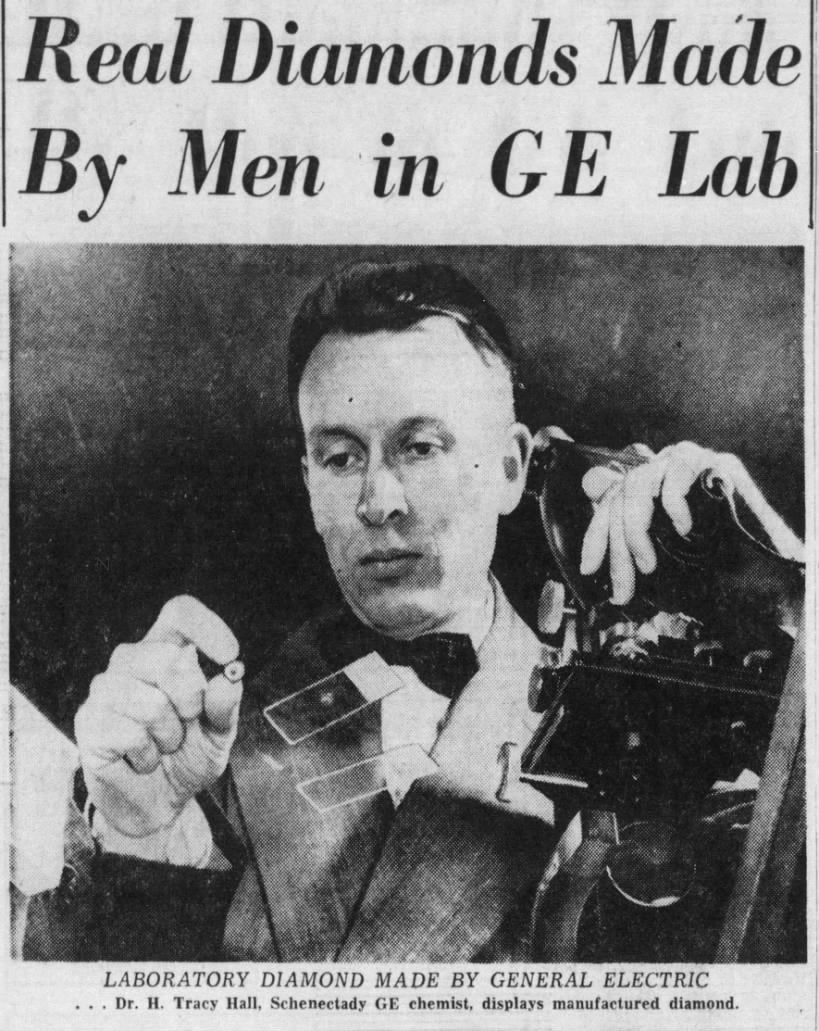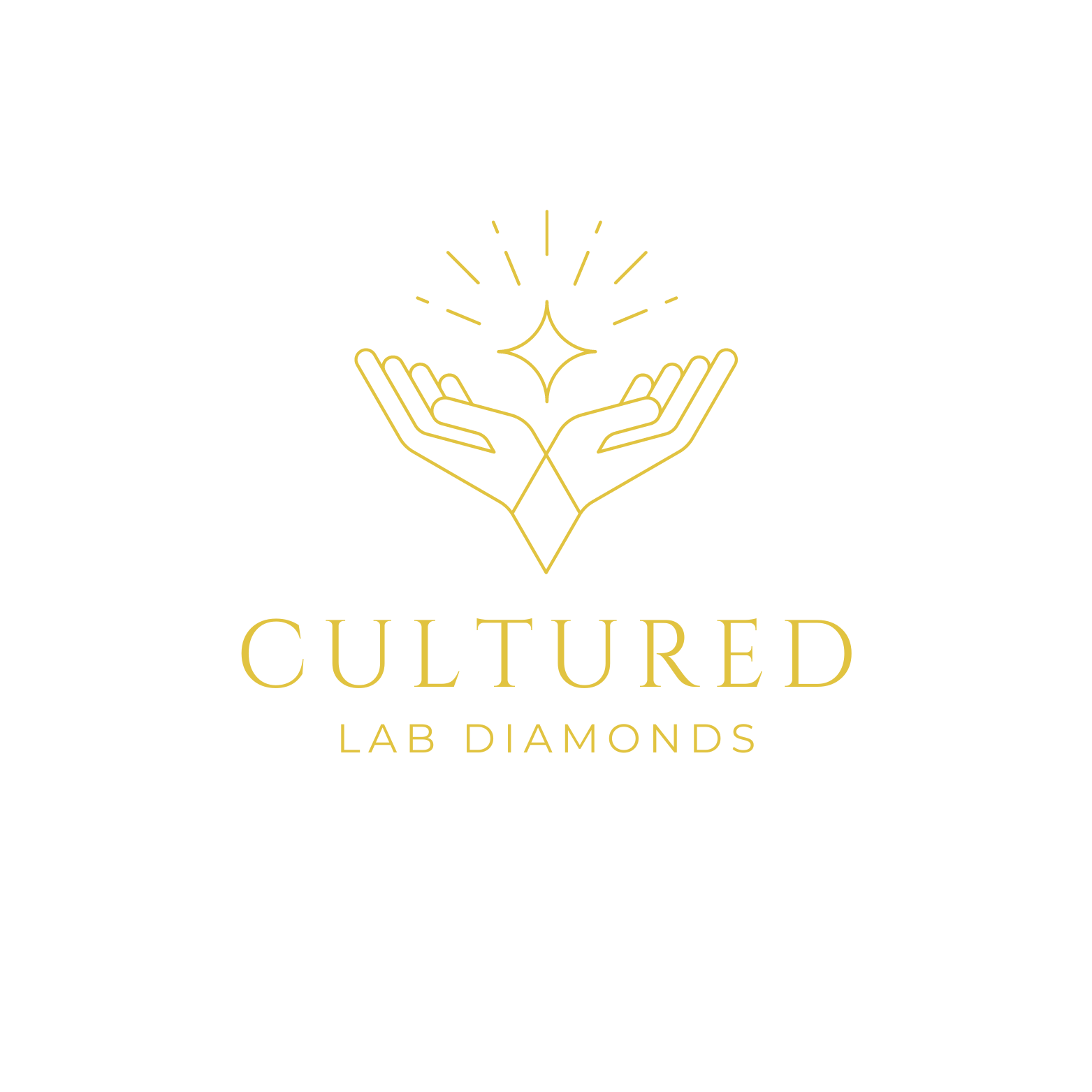
When Did Lab-Grown Diamonds Start?
By Heather Siegel
Lab-grown diamonds, also known as synthetic or cultivated diamonds, began their journey in the mid-20th century. The first successful creation of a lab-grown diamond was in the 1950s, marking the start of a new era in diamond production. This innovative breakthrough was achieved by Swedish engineer H. Tracy Hall and his team at General Electric in 1954, utilizing a High Pressure High Temperature (HPHT) method. This pivotal moment answers the often-asked question, "When did lab-grown diamonds start?" by pinpointing the first instance of human-made diamonds that offered a sustainable and ethical alternative to mined diamonds.
Following the initial success in the 1950s, lab-grown diamonds have seen substantial technological advancements, leading to the adoption of another method known as Chemical Vapor Deposition (CVD) in the 1980s. The CVD process allowed for more control over the diamond's quality and size, further cementing the importance of lab-grown diamonds in both industrial applications and jewelry.
The evolution of lab-grown diamond technology has had a significant impact on the market. Initially, the HPHT process mimicked the natural conditions under which diamonds are formed deep within the Earth, using high pressure and high temperature. This method was primarily used for industrial purposes due to the diamonds' smaller size and lower quality. However, as technology progressed, the quality of HPHT diamonds improved, making them suitable for jewelry.
The introduction of the CVD process in the 1980s represented a major technological leap. This method involves breaking down molecules of a carbon-rich gas, such as methane, in a vacuum at low pressures and high temperatures to allow carbon atoms to accumulate on a substrate, growing the diamond layer by layer. The CVD process has been instrumental in producing high-quality gem-grade diamonds, capable of meeting the jewelry industry's high standards.
Advantages of Lab-Grown Diamonds
Lab-grown diamonds offer several advantages over their mined counterparts. Ethically, they provide a conflict-free alternative, ensuring buyers that their purchase does not contribute to labor or human rights abuses often associated with diamond mining. Environmentally, they have a smaller carbon footprint and significantly reduce the ecological damage caused by mining operations. Economically, lab-grown diamonds typically offer better value, as they can be produced at a fraction of the cost of mining, resulting in lower prices for consumers without compromising quality.
Cultured Lab Diamonds: A Leader in Innovation
In answering "When did lab-grown diamonds start?" it's crucial to recognize the role of pioneering companies like Cultured Lab Diamonds. With a commitment to sustainability, ethical production, and technological innovation, Cultured Lab Diamonds has established itself as a leader in the industry. By offering high-quality, lab-grown diamonds directly from the factory, Cultured Lab Diamonds ensures competitive pricing that challenges traditional diamond retailers and provides consumers with a more accessible option for sustainable luxury.
Conclusion
Since the inception of lab-grown diamonds in the 1950s, the industry has witnessed remarkable advancements in technology and production methods. These developments have made lab-grown diamonds a popular choice for consumers seeking ethical, sustainable, and affordable options. Cultured Lab Diamonds epitomizes this shift towards responsible consumption, offering exceptional quality diamonds that reflect the highest standards of integrity and innovation. When considering "When did lab-grown diamonds start?" it's clear that the journey from their initial creation to today's widespread acceptance marks a significant achievement in the quest for ethical and sustainable luxury.
Following the initial success in the 1950s, lab-grown diamonds have seen substantial technological advancements, leading to the adoption of another method known as Chemical Vapor Deposition (CVD) in the 1980s. The CVD process allowed for more control over the diamond's quality and size, further cementing the importance of lab-grown diamonds in both industrial applications and jewelry.
The evolution of lab-grown diamond technology has had a significant impact on the market. Initially, the HPHT process mimicked the natural conditions under which diamonds are formed deep within the Earth, using high pressure and high temperature. This method was primarily used for industrial purposes due to the diamonds' smaller size and lower quality. However, as technology progressed, the quality of HPHT diamonds improved, making them suitable for jewelry.
The introduction of the CVD process in the 1980s represented a major technological leap. This method involves breaking down molecules of a carbon-rich gas, such as methane, in a vacuum at low pressures and high temperatures to allow carbon atoms to accumulate on a substrate, growing the diamond layer by layer. The CVD process has been instrumental in producing high-quality gem-grade diamonds, capable of meeting the jewelry industry's high standards.
Advantages of Lab-Grown Diamonds
Lab-grown diamonds offer several advantages over their mined counterparts. Ethically, they provide a conflict-free alternative, ensuring buyers that their purchase does not contribute to labor or human rights abuses often associated with diamond mining. Environmentally, they have a smaller carbon footprint and significantly reduce the ecological damage caused by mining operations. Economically, lab-grown diamonds typically offer better value, as they can be produced at a fraction of the cost of mining, resulting in lower prices for consumers without compromising quality.
Cultured Lab Diamonds: A Leader in Innovation
In answering "When did lab-grown diamonds start?" it's crucial to recognize the role of pioneering companies like Cultured Lab Diamonds. With a commitment to sustainability, ethical production, and technological innovation, Cultured Lab Diamonds has established itself as a leader in the industry. By offering high-quality, lab-grown diamonds directly from the factory, Cultured Lab Diamonds ensures competitive pricing that challenges traditional diamond retailers and provides consumers with a more accessible option for sustainable luxury.
Conclusion
Since the inception of lab-grown diamonds in the 1950s, the industry has witnessed remarkable advancements in technology and production methods. These developments have made lab-grown diamonds a popular choice for consumers seeking ethical, sustainable, and affordable options. Cultured Lab Diamonds epitomizes this shift towards responsible consumption, offering exceptional quality diamonds that reflect the highest standards of integrity and innovation. When considering "When did lab-grown diamonds start?" it's clear that the journey from their initial creation to today's widespread acceptance marks a significant achievement in the quest for ethical and sustainable luxury.

